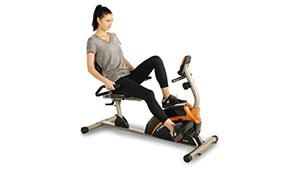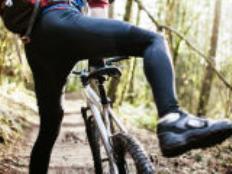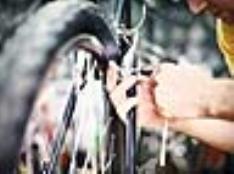Peak and Taper
Plan your peak training ride two to three weekends before your double century. Then taper with shorter rides of just three to four hours on the last weekend to be sure you are fully recovered. Continue one or two short intensity rides each week to maintain your leg speed.
Figure Out Your Nutrition
You can tough it out for 100 miles even if you aren't eating properly, but riding a double century that way gets ugly! When you ride you burn a combination of glycogen (from carbohydrate) and fat for energy. We all have enough fat for the ride but only enough glycogen for several hours of hard riding. If you run out of glycogen, you bonk (your brain feels fuzzy) and hit the wall (dead legs).
On your training rides experiment to see what tastes good and sits well in your stomach. You should eat primarily carbohydrates. Sports drinks and bars, fruit, low fat granola bars and cookies, bagels with peanut butter and jelly are all good. Your tastes may change during the long ride so experiment to find a number of satisfying foods.
Find out what the event organizers will be serving and test all your nutrition on your long rides. If you don't like what they provide, bring your own. Nothing new on the big event.
More: How Much Fuel Do You Need During Long Rides
Eat Every Hour
Eat 240 to 360 calories of carbohydrate every hour plus a little protein and fat if you like. Taking on fuel at regular intervals is critical--set your watch to beep every 10-15 minutes to remind you.
Consume Fluid and Sodium
Drink enough fluid to satisfy your thirst and so that you are urinating with a good clear stream every couple of hours.
Sodium is the main electrolyte lost in sweat and sodium losses can cause cramping. Sports drinks don't have enough sodium so you also need to eat salty snacks such as pretzels, pickles and deli turkey.
More: 2 Ways to Conquer Cramps on the Bike
Get Comfortable on the Bike
What's annoying on a century could become a showstopper on a long ride. If you haven't had a professional bike fit recently, get one. Tell the shop mechanic that you'll be doing a long ride. For ultra distance the bike fit is different--comfort becomes more important than aerodynamics.
Pay particular attention to the points of contact: butt, hands and feet. Discomfort at any of these points will result in pain by the second half of the long ride.
If a saddle fits correctly your weight should rest on your sitz bones and there should be no pressure on the soft tissues. Stand every 10-15 minutes to relieve pressure on the sitz bones. To prevent friction use pure petroleum jelly, which is as effective as more expensive products.
Pressure on the nerves in the palms of your hand will cause pain and numbness. Your core should be strong enough that your hands rest lightly on the bars like you are typing. Move your hands every few minutes to different positions on the bars.
On long rides you may develop hot feet, which result from pressure on the nerves rather than heat. Loosen your shoes and ankle a bit more at the bottom of the stroke. At rest stops take your shoes off and walk around in your socks while flexing your toes.
More: Bike-Fit Tips From 5 Cycling Experts
- 2
- of
- 3








Discuss This Article